Intercept theorem examples
Example 1
A lady wants to get onto a flat roof and needs to work out what size ladder she needs. 1.8 metres up, there is a bracket sticking out of the wall. The bracket casts a shadow 3 metres away from the base. The flat roof casts a shadow 8 metres from the base. How high is the roof?
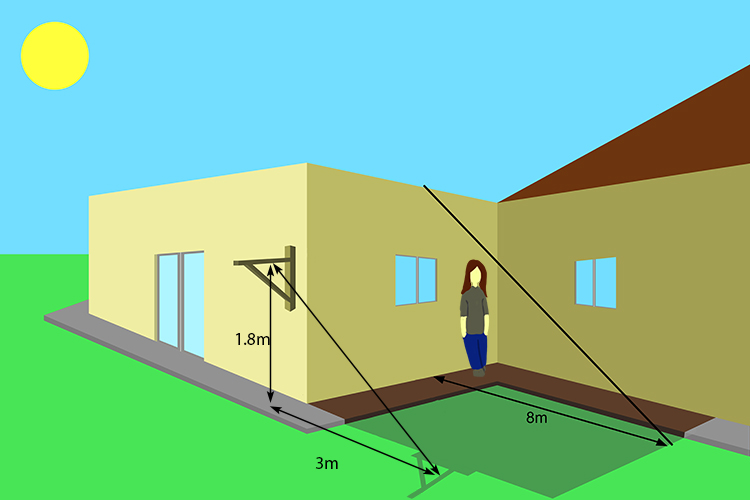
Redraw this diagram as:
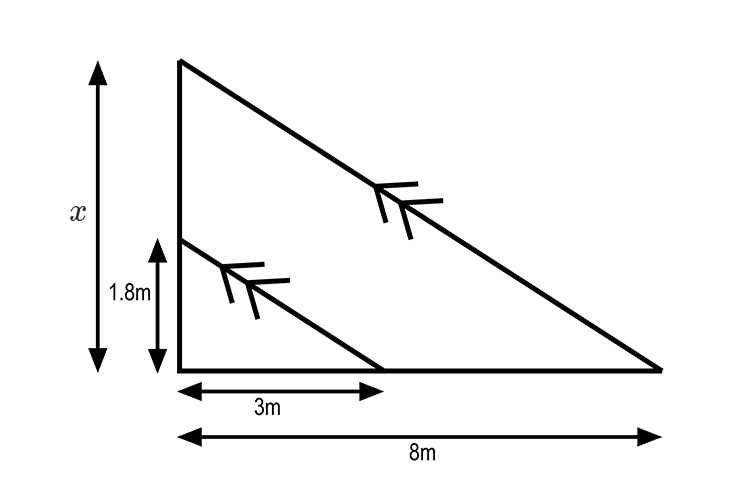
Remember - Thales' intercept theorem states that the segments created by parallel lines are proportional.
Therefore `3/8=1.8/x`
Rearrange `x` to be the subject of the formula.
`x=(1.8times8)/3`
`x=4.8`
Answer: The height of the flat roof is 4.8m.
Example 2
In the following diagram what is the value of `x`?
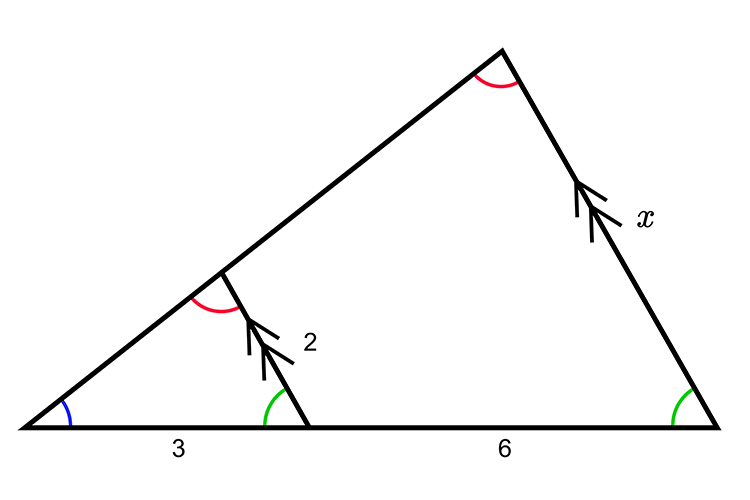
Remember that Thales' intercept theorem states that the segments created by parallel lines are proportional.
Therefore `3:(3+6)` is proportional to `2:x`
Or
`3/(3+6)=2/x`
`3/9=2/x`
Rearrange to make `x` the subject of the formula:
`x=(2times9)/3=18/3`
`x=6`
NOTE:
`3:6` is not proportional to `2:x` because 6 is not the full length of the side of the triangle.
Example 3
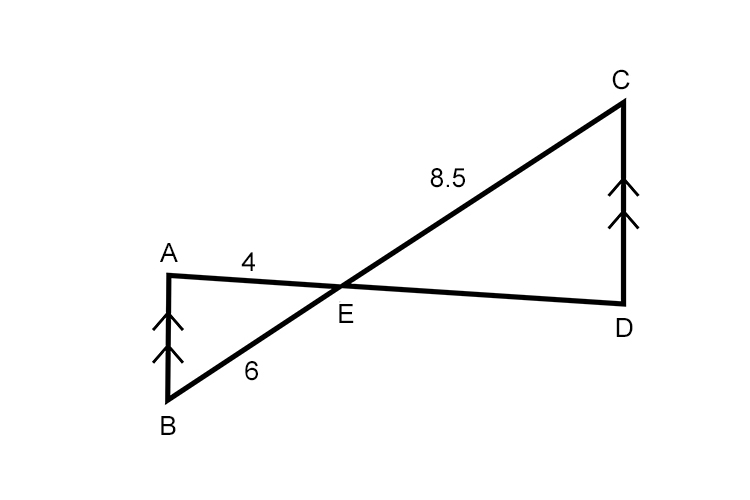
In the above diagram, AB is parallel to DC. How long is ED?
Answer:
If AB and CD are parallel then these two triangles are similar and so the diagram above can be
re-drawn as:

Triangle ABE has been spun through 180° with point E as the pivot point.
Now the question "how long is ED?" is easy.
Using Thales' intercept theorem (with parallel lines) the triangle sides would be proportional i.e.
`8.5/6=(ED)/4`
Rearrange the formula so that ED is the subject of the formula.
`ED=(8.5times4)/6`
Answer: ED = 5.67
Example 4
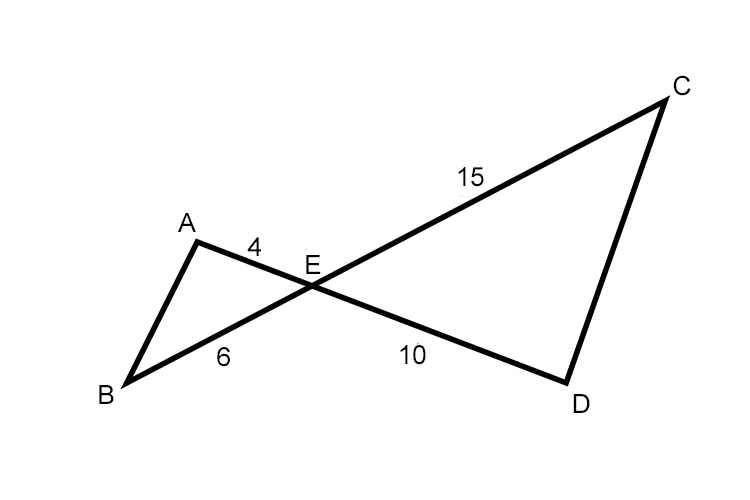
Are lines AB and CD parallel?
If they are parallel then these two triangles are similar and so can be re-arranged as:

And using Thales' intercept theorem (with parallel lines) full length triangle sides would be proportional i.e.
`4/10` Would be proportional to `6/15`
`2/5=0.4` `3/7.5=0.4`
As they are the same answer then the lines AB and CD are parallel
Example 5
If the lines CD and BE are parallel which of the following equations are correct?

`(AC)/(CD)=(BE)/(CD)=(AB)/(AE)` or `(AB)/(AC)=(AE)/(AD)=(BE)/(CD)` or `(CB)/(CA)=(DE)/(DA)=(CD)/(BE)` or `(CB)/(CA)=(DE)/(DA)=(BE)/(CD)`
To check this out remember Thales' intercept theorem that if two intersecting lines are intercepted by parallel lines, then the segments created are proportional.
Example 6
In the following diagram how long is AB?
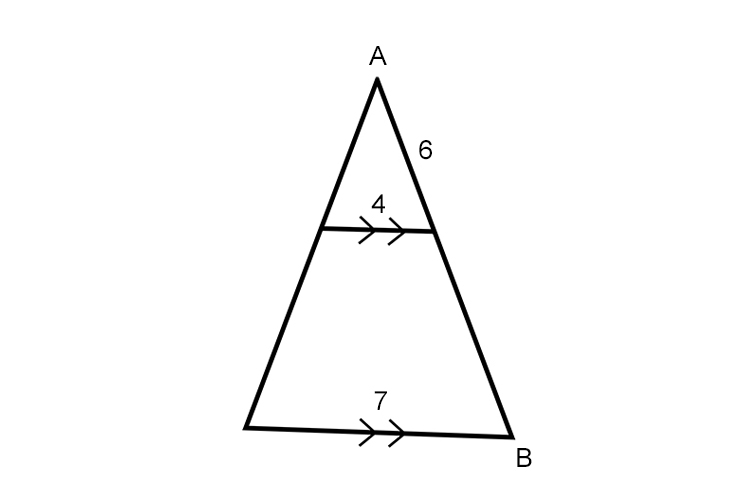
Two sides are parallel.
Therefore `6/(AB)=4/7`
`AB=(6times7)/4=42/4=21/2=10.5`
Answer: AB is 10.5
Example 7
Are the lines AB and CD parallel?
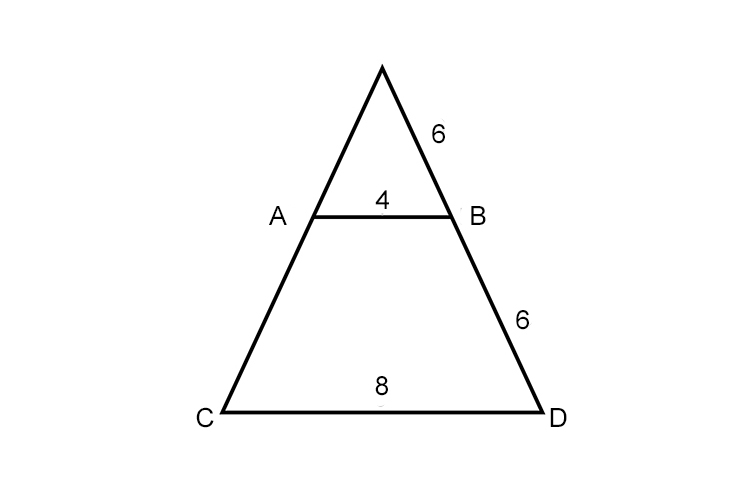
If they are then `6/12=4/8`
`1/2=1/2` So yes AB and CD are parallel.




